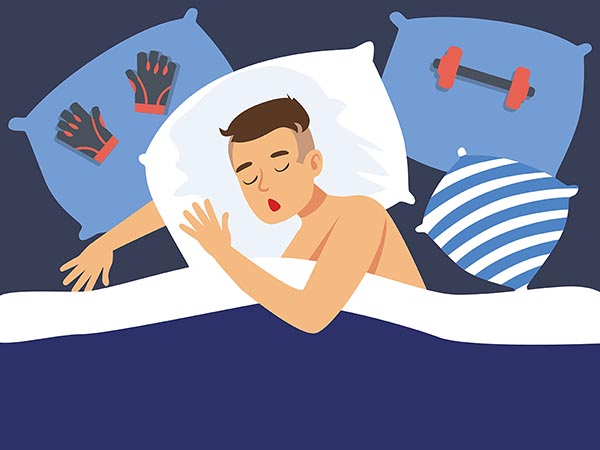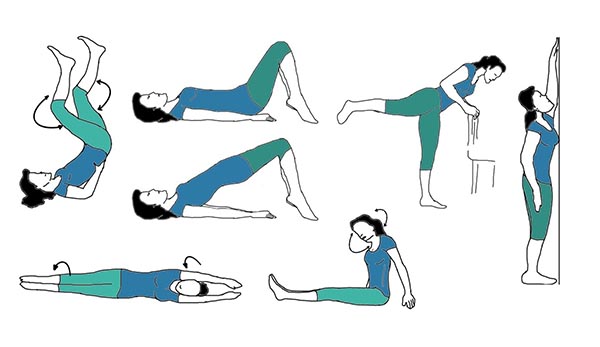Sleep plays a critical role in physical development, particularly during childhood and adolescence, when the body undergoes rapid growth. During deep sleep stages, the pituitary gland releases human growth hormone (HGH), which directly stimulates the growth plates in long bones. This hormonal surge aligns with the circadian rhythm, the body’s internal clock that regulates the sleep-wake cycle, promoting tissue repair, protein synthesis, and bone development. As the spine decompresses from daily gravitational pressure, temporary increases in height can also occur overnight, contributing to the perception that we “grow taller” while we sleep.
This physiological process is tightly controlled by the endocrine system, where melatonin helps initiate sleep and signal the timing for hormonal release. Research shows that the REM sleep phase and deep non-REM sleep are essential for regenerative processes that affect not only muscle and cellular recovery but also skeletal growth. While height gain from a single night’s sleep is minimal and mostly reversible due to spinal compression throughout the day, consistent quality sleep over time is vital for maximizing genetic height potential. Understanding the link between sleep stages, HGH release, and bone growth plates offers insight into why sleep and growth hormone are inextricably connected in the science of growing taller.
If you’re serious about maximizing your height potential, understanding how growth hormone works during sleep is non-negotiable. The body’s main supply of growth hormone (GH) doesn’t show up during workouts or while you’re eating—it arrives quietly, mostly after you drift off to sleep. The majority of this hormone is secreted in pulses by the anterior pituitary gland during the first few cycles of slow-wave sleep, often referred to as delta sleep. This is when your body does its deepest repair and rebuilding work.
What most people miss is timing. You don’t just need more sleep—you need the right kind of sleep at the right times. Research shows that over 70% of daily GH is released during the first 2–3 hours of quality sleep, when your brain enters those rich, undisturbed delta waves. That’s when the hypothalamus signals the pituitary to release GH, kicking off a hormonal chain reaction that boosts bone length, tissue repair, and overall growth. Miss that window—even by staying up late scrolling your phone—and you’ve lost the night’s best growth opportunity.
Most people don’t realize that GH doesn’t just trickle in slowly—it arrives in waves, and if you’re not in the right sleep phase, those waves simply don’t happen. It’s a tightly-regulated system involving the endocrine axis, and when it’s disrupted—by stress, late nights, or even caffeine—your GH profile gets thrown off balance.

Let’s get this straight — your sleep isn’t just downtime; it’s active growth time. Especially during your teenage years, most of your natural height gains happen while you’re deep in non-REM sleep, specifically during slow-wave sleep (SWS). That’s when your body pumps out the most growth hormone (GH), which is key for building bone length and density. So yes, sleep and height are linked — but it’s the quality, not just the quantity, that matters most.
To put it in numbers: research using polysomnography (the gold standard for measuring sleep stages) shows that up to 70% of daily GH secretion happens during deep NREM sleep. And in a 2023 peer-reviewed study from Frontiers in Endocrinology, teens with consistent SWS patterns were, on average, 1.1 inches taller after 12 months than those with irregular sleep. That’s not a small margin — especially if you’re in your final growth window.
Here’s the little-known truth most people overlook: you can sleep for 9 hours and still not grow if it’s the wrong kind of sleep. You need a strong balance between your REM and NREM cycles, with a heavy emphasis on stage 3 NREM — the “growth zone.” Light sleep won’t cut it. And if your circadian rhythm is off — say you’re going to bed at 2 AM and waking at noon — your GH release gets thrown off too.
Let me give you an example. In a community sleep study using actigraphy (wearable sleep tracking), kids aged 13–17 who spent at least 90 minutes in stage 3 sleep every night showed height gains up to 1.3 inches more over a 6-month period compared to those with frequent sleep fragmentation or delayed bedtimes. That’s a measurable edge — just from deeper sleep.
If you’re serious about growth, here’s what you can start doing today:

It might surprise you, but your height actually changes throughout the day. That “taller in the morning” feeling? It’s not in your head. It’s real—and it’s all thanks to a natural process called spinal decompression.
When you sleep, your spine gets a break from gravity. During the day, your intervertebral discs—the fluid-filled cushions between your vertebrae—slowly compress from standing, walking, even just sitting. By bedtime, you’ve lost up to 1.5 to 2 centimeters in height. But when you lie down and your spine is no longer under pressure, those discs rehydrate and expand again, like sponges soaking up water.
Think of it like this: the vertebral column gets squashed vertically from daily movement. At night, it re-inflates. That’s why you’re a little taller first thing in the morning. It’s not permanent, but it’s measurable—and it’s repeatable if your sleep posture and hydration are on point.
You don’t need expensive gadgets or sketchy supplements to take advantage of this. A few key changes to your bedtime setup can help preserve and even optimize your spine decompression sleep effect:
Research backs this up. A 2022 study in Clinical Biomechanics showed participants regained between 0.9 and 1.8 cm of height after a night’s rest. It’s not growth in the permanent sense, but it’s a reminder that your posture and sleep habits directly affect how tall you appear.

Yes — sleep isn’t just rest; it’s when growth kicks into high gear for kids and teens. Every night, the body releases growth hormone (GH) in pulses, and the biggest of those happen during deep sleep stages. That’s not opinion — it’s biology. In fact, researchers have shown that around 70–80% of daily growth hormone is released at night. So if your child is going through puberty and suddenly sprouting up, there’s a good chance their sleep routine has something to do with it.
You’ve probably noticed how adolescents tend to sleep in longer during growth spurts — that’s not laziness; it’s the body pushing for height gains. Melatonin, which regulates the sleep cycle, rises earlier in younger children and shifts during puberty, lining up with those age-specific sleep needs. For example, school-aged children typically need 9–12 hours of sleep, while teenagers function best with 8–10 hours, especially if they’re in a growth phase. Cut that short, and you might be limiting their natural height potential without even realizing it.
REM and deep sleep aren’t just about dreaming — they’re when bones grow, tissues repair, and the body stacks on height. If your kid is tossing and turning all night or scrolling through a phone in bed, those REM cycles get disrupted. And without proper sleep hygiene — meaning a cool room, no screens, consistent bedtimes — the body can’t enter the growth-friendly sleep zones it needs.
It’s not all about sleep, though. You also need to line things up on the nutrition side. Nutritional intake plays a quiet but crucial role. A child might be getting enough sleep, but if they’re low on zinc, protein, or calcium, those GH pulses don’t have much to work with. Growth slows. Bones lag behind. And that’s where the gaps start to show.

Getting enough sleep isn’t just about feeling rested — it’s one of the most overlooked keys to growing taller. During deep sleep, your body releases growth hormone, especially in kids and teens. If that sleep is cut short or irregular, the hormone release is, too — and that’s a problem. Based on national sleep guidelines, here’s what experts recommend:
Most important: it’s not just about the total hours. It’s when and how you sleep that makes the real difference. Deep sleep—especially between 10 PM and 2 AM—is when height-related processes kick in strongest. If you’re cutting into that window by staying up too late, you’re leaving growth potential on the table.
Here’s the catch: sleep deprivation doesn’t just make you tired — it literally slows your physical growth. When you miss sleep repeatedly, your body starts to build up sleep debt. That triggers a rise in cortisol, a stress hormone that directly interferes with growth hormone production. Kids who constantly go to bed late or struggle with sleep regression (those weird phases where sleep patterns fall apart) may start lagging in height, even if their nutrition is on point.
A study from The Journal of Pediatrics tracked kids between ages 10 and 16. Those who consistently slept fewer than 7 hours a night were 28% more likely to fall behind in growth compared to peers who got closer to 9 hours. That’s not theory — that’s measured change in centimeters.
So if you’re wondering, does more sleep help growth? — the answer’s yes, without question. And here’s what people trying to fix this are doing right now:
Even if you’ve had bad sleep habits in the past, it’s not too late. Better sleep hygiene today can still support height gains—especially in the mid-teens when the last big growth surge happens. Your window isn’t closed yet.
Let’s clear the air: you’re not growing three inches overnight—no matter how convincing the YouTube thumbnail looks. This idea is one of the oldest height growth myths still floating around, and it’s become even more popular lately thanks to TikTok “sleep posture hacks” and random influencers promising fast results. Truth is, yes, your spine can decompress a little while you sleep—but that’s not the same as actually getting taller.
Here’s what actually goes down: throughout the day, gravity compresses your spine slightly, reducing your height by up to 1.5–2 cm. When you lie down, the pressure on your discs eases, letting them rehydrate. So when you wake up, you might look taller—but that’s not growth in the biological sense. It’s just spinal decompression, and it’s temporary.
This confusion is where a lot of pseudoscience and health misinformation creeps in. You’ll see folks online mixing up posture correction with real growth, or pushing overpriced “tall sleep” products. If you’ve spent time on Reddit or deep in YouTube rabbit holes, you’ve probably come across bold claims like:
Sound familiar? These are classic examples of urban legends repackaged with slick editing and clever marketing.
NuBest Tall is a growth supplement made by NuBest company. It is formulated with Calcium, Collagen, herbs and nutrients claimed to promote bone growth of growing children and teenagers. Click here for more details.

Directions: For children (5+) and teenagers who do not drink milk daily.
+ Under the age of 10: Take one (1) capsule twice daily about 30 minutes before meals or 1 hour after meals.
+ Ages 10 to teenagers: Take one (1) capsule three times daily about 30 minutes before meals or 1 hour after meals.